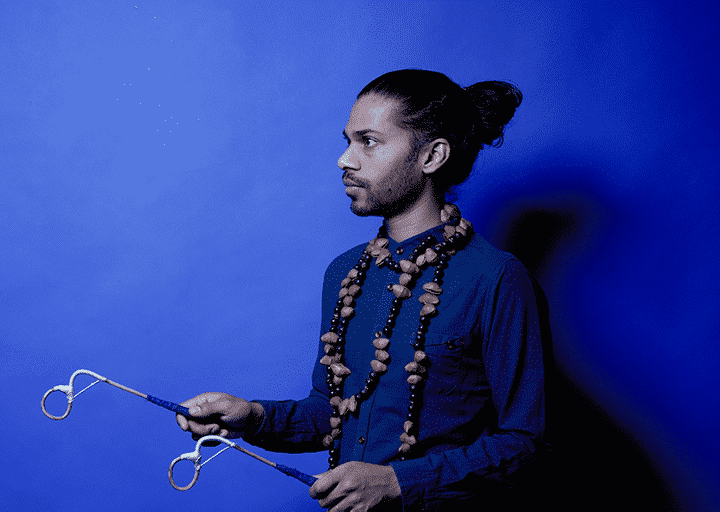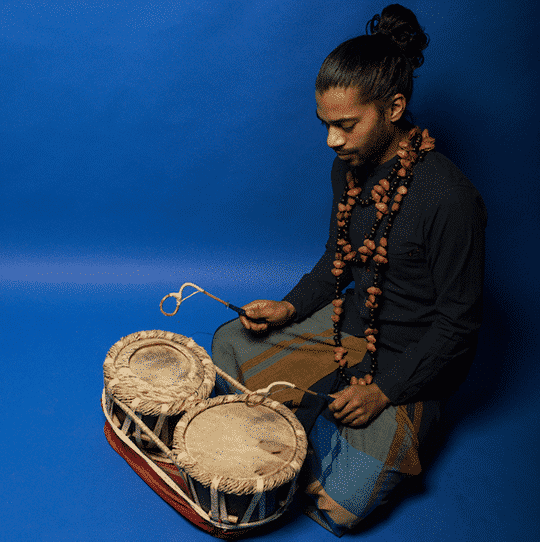Rajiv Jayaweera Draws From Sri Lankan Heritage on Debut Album, <I>Pistils</I>


It’s atypical for a drummer-led debut to open with a contemplative, rubato tune shaded by hushed, minimal brushwork. But jazz drummer/composer Rajiv Jayaweera favors attention to sound and ensemble voice over bluster.
On Pistils (Outside in Music), Jayaweera’s superb touch yields dancing interplay and dramatic dynamics, calling to mind Paul Motian and Jon Christensen circa their ECM days. On several numbers, Rajiv draws from his Sri Lankan heritage, as on “Ellstandissa,” where he interprets a traditional dance rhythm. In addition, his kit is augmented with the thammattama, a ceremonial drum pair played with curved-end sticks.
Artful at creating contrasting textures, Jayaweera often alternates seamlessly between various combinations of sticks, brushes, mallets, and rods. And though his rhythmic drive is fluid and breathing, it’s potently propulsive, as on “Galadari,” where he generates an effortless joy ride from shifting odd meters. In a set intended to evoke nature, this outstanding quintet’s patient, lyrical, and finely detailed tapestry undeniably succeeds. We wanted to know more. Advertisement
MD: You integrate Sri Lankan elements in your music. How is that specifically present in your composing or drumming?
Rajiv: In general, I tried to use images and memories from Sri Lanka that I had in my mind as inspiration for the compositions. I wanted to try to capture and convey the beauty that exists there through the songs.
MD: Could you explain and breakdown the traditional dance rhythm you’re applying in “Ellstandissa”?
Rajiv: The introduction to “Ellstandissa” is based on a dance in 7/8. The opening phrases are rubato, but when the time begins I play parts of the same rhythm as triplets grouped in seven, counting in 3/4. The bass line is also related, and groupings of three in 9/8 shift back by two 8th notes each time [2223, 2232, 2322, 3222]. This creates a rhythmic pattern in seven, but the harmonic rate remains in 9/8 or 3/4.
I was drawn to the thammattama drum because it’s played with sticks, so I could utilize my technique from playing the drumset. The sticks themselves are really interesting, and the end that strikes the drum has a hollow circle instead of a small bead like a conventional drumstick. This helps to create a warm tone and also protects the drumhead. I actually pierced a skin once trying to play it with a regular stick! Advertisement
MD: You grew up in Melbourne and were busy on the jazz scene there. What prompted you to pull up stakes and move to New York?
Rajiv: I had wanted to move to New York ever since I spent three months here in 2002. During that trip I saw multiple shows every single night and really fell for the city. I knew I wanted to move here but didn’t know how. Ten years later, I finally decided to audition for some schools to do my master’s, and that’s what ultimately brought me to the city in 2011. I completed my master’s in jazz studies at SUNY Purchase, New York, in 2013.
MD: Though this is a drummer-led debut, it’s certainly not a drum-centric record. Even when you’re allowed your one solo break on “Galadari,” it’s kept brief.
Rajiv: My goal was to showcase the melodies and harmony of each song, and to try to create honest music as a band. I wanted to serve the songs but didn’t feel the need to feature the drums or play more just because it was a drummer-led album, except for when the music called for it. In general, I like the approach of leaving space and seeing what happens, and I think that gave [saxophonist] Chris Cheek, [pianist] Aaron Parks, [vocalist] Lara Bello, [guitarist] Hugh Stuckey, and [bassist] Sam Anning the freedom to bring their own interpretations and personalities to the music.
After I had written the songs, I actually sometimes found it challenging to know what to play myself on the drums. I even considered having songs without drums on them at all.
MD: You’re able to exert strong rhythmic power with a light touch and within soft to moderate volumes. Was that a conscious development?
Rajiv: I have always naturally gravitated to playing at a softer dynamic. I mostly play in acoustic settings, so I’m usually paying close attention to the overall balance of the band and to dynamics in general. I don’t feel as though the drums necessarily have to be at the front of the mix for the music to be powerful. Advertisement
Jeff Potter


